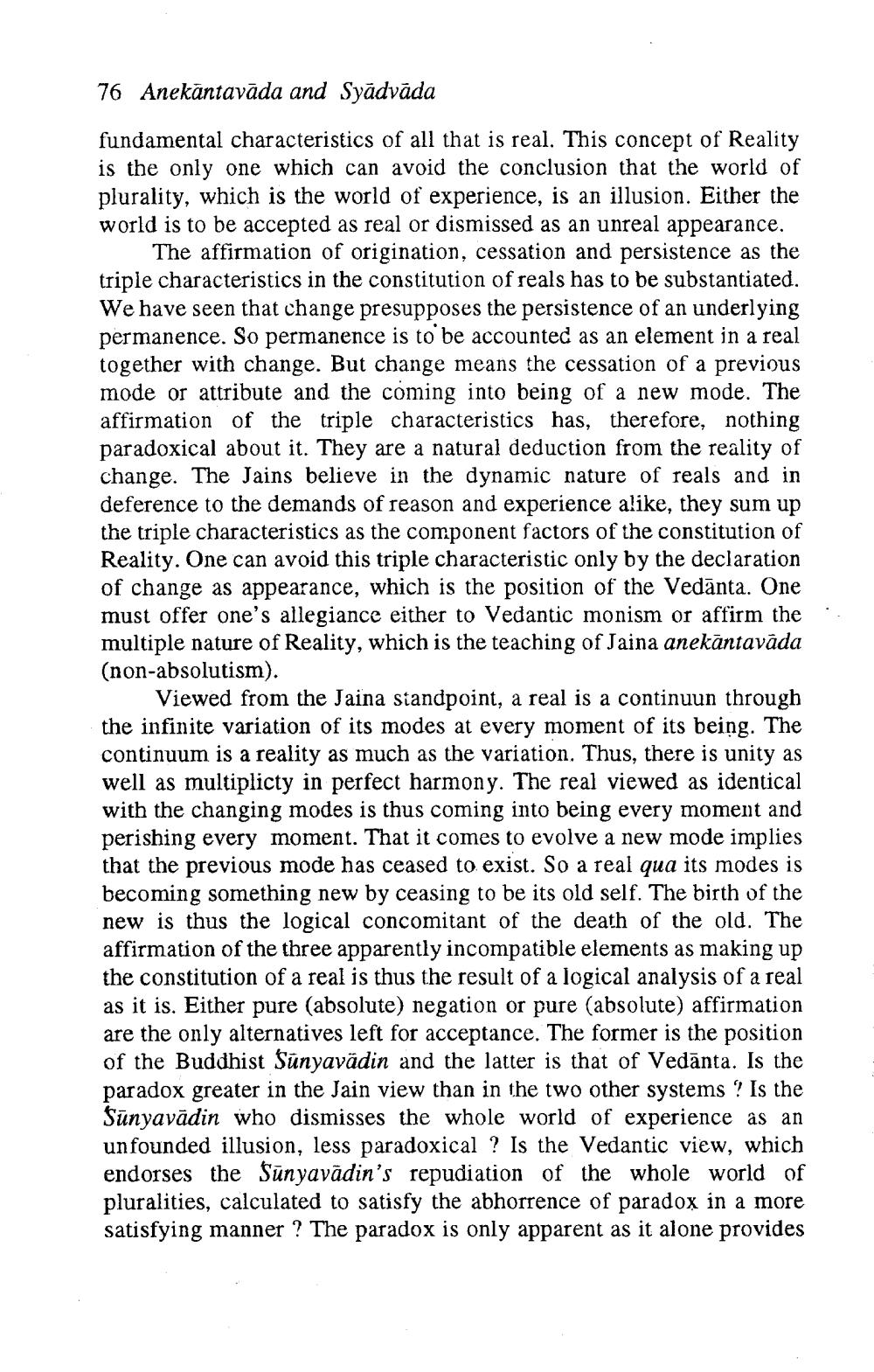________________
76 Anekāntavāda and Syädvāda
fundamental characteristics of all that is real. This concept of Reality is the only one which can avoid the conclusion that the world of plurality, which is the world of experience, is an illusion. Either the world is to be accepted as real or dismissed as an unreal appearance.
The affirmation of origination, cessation and persistence as the triple characteristics in the constitution of reals has to be substantiated. We have seen that change presupposes the persistence of an underlying permanence. So permanence is to be accounted as an element in a real together with change. But change means the cessation of a previous mode or attribute and the coming into being of a new mode. The affirmation of the triple characteristics has, therefore, nothing paradoxical about it. They are a natural deduction from the reality of change. The Jains believe in the dynamic nature of reals and in deference to the demands of reason and experience alike, they sum up the triple characteristics as the component factors of the constitution of Reality. One can avoid this triple characteristic only by the declaration of change as appearance, which is the position of the Vedānta. One must offer one's allegiance either to Vedantic monism or affirm the multiple nature of Reality, which is the teaching of Jaina anekāntavāda (non-absolutism).
Viewed from the Jaina standpoint, a real is a continuun through the infinite variation of its modes at every moment of its being. The continuum is a reality as much as the variation. Thus, there is unity as well as multiplicty in perfect harmony. The real viewed as identical with the changing modes is thus coming into being every moment and perishing every moment. That it comes to evolve a new mode implies that the previous mode has ceased to exist. So a real qua its modes is becoming something new by ceasing to be its old self. The birth of the new is thus the logical concomitant of the death of the old. The affirmation of the three apparently incompatible elements as making up the constitution of a real is thus the result of a logical analysis of a real as it is. Either pure (absolute) negation or pure (absolute) affirmation are the only alternatives left for acceptance. The former is the position of the Buddhist Sünyavādin and the latter is that of Vedānta. Is the paradox greater in the Jain view than in the two other systems ? Is the Sünyavādin who dismisses the whole world of experience as an unfounded illusion, less paradoxical ? Is the Vedantic view, which endorses the Sünyavādin's repudiation of the whole world of pluralities, calculated to satisfy the abhorrence of paradox in a more satisfying manner ? The paradox is only apparent as it alone provides




